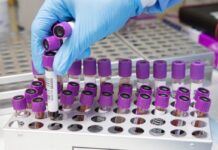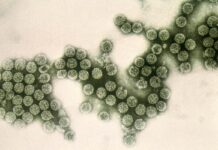
The comprehensive study commissioned by the German Federal Ministry of Food and Agriculture has revealed that the perception of pain in chicken embryos begins on the 13th day of incubation. Countries such as France, Germany, and Italy are seeking alternatives through laws that prohibit the culling of male chicks.
The in-depth study focused on three phases, analyzing cardiovascular responses, electroencephalic neuronal activity, and embryonic movements. The results showed that significant brain activity begins on the 13th day, marking the potential onset of pain perception, differing from previous studies. This finding is crucial for guiding future changes in the poultry industry and laws related to the culling of male chicks.
In response to these findings, Germany has modified the ban on interrupting incubation, initially set at the seventh day, extending it to the 13th day. The article also explores emerging technologies to determine the gender of embryos without culling them. The research could influence future European Union regulations regarding the ban on culling male chicks, providing a clear understanding of the critical period when pain perception can begin, namely on the 13th day of development.
Every year in the EU, nearly 330 million one-day-old male chicks are killed in hatcheries. While females are raised for egg production, males are considered undesirable in both the egg and meat sectors due to their slow growth and limited meat yield at slaughter age. In response to this unethical practice, France, Germany, and Italy have taken the initiative to reinvent the poultry industry by enacting laws banning the culling of male chicks. This article delves into the research methodology and its implications, shedding light on the crucial intersection between ethical considerations and technological progress in the poultry industry.
Revolutionary insights into the sensation of pain in chicken embryos
With the prohibition of chick culling, French, German, and Italian hatcheries are shifting their focus toward advanced technologies capable of determining the sex of embryos within eggs, facilitating the identification and removal of eggs containing male chicken embryos. These excluded eggs find purpose in animal feed or scientific research. However, the animal welfare consciousness execution of this process hinges on a crucial question: what is the specific timeframe during which a chicken embryo in an egg is devoid of pain sensation? In previous research done in 2020 by the Bundestag’s scientific service, it was widely agreed that a chicken embryo lacks the capacity to feel pain before the seventh day but can certainly experience it after the 15th day.
In light of these insights, Germany planned to implement, from 2024, an extended regulation safeguarding chicken embryos in eggs from the seventh day of incubation. Within this timeframe, eggs could only be terminated, and embryos destroyed in the initial days. To gain deeper insights into the pain perception of chicken embryos, the German Federal Ministry of Food and Agriculture (BMEL) commissioned a pivotal study. The groundbreaking outcome affirmed that chicken embryos remain insensitive to pain until incubation day 12.
Following a comprehensive approach, the research was divided into three parts.
The first phase of the study commissioned by the BMEL focused on cardiovascular responses to a mechanical noxious stimulus and uncovered intriguing insights into the maturation of chicken embryos’ cardiovascular systems. From day 7 to 18, a progressive increase in systolic, diastolic, and mean arterial pressure indicated a developmental trajectory. Nociceptive responses to a pinch stimulus on days 16, 17, and 18 revealed clear increases in mean arterial pressure, with varying heart rate responses. The application of local anesthesia with lidocaine successfully mitigated the increase in mean arterial pressure, underscoring the potential nociceptive nature of observed cardiovascular changes. While mean arterial pressure emerged as a reliable indicator of nociception, the variability in heart rate responses highlighted the need for a comprehensive evaluation.
Moving on to the second phase, which explored the embryonal development of electroencephalic neuronal activity, the study delved into the realm of brain activity in chicken embryos. The findings showcased consistent meaningful EEG activity commencing reliably from day 13, aligning with critical milestones in brain development observed in newly hatched chickens. The study’s exploration of the EEG’s capacity to reflect sensory input unveiled diverse electrical patterns in response to thermal and electrical stimulation. Importantly, evidence of conscious pain perception was absent before day 13, a conclusion supported by histological examination indicating potential nociception. The pivotal result suggests that meaningful EEG activity at developmental day 13 marks the initiation of potential nociceptive processing, providing a foundational understanding for subsequent in-depth investigations.
In the third and final phase, the study analyzed movements before and after a noxious stimulus, employing advanced technologies such as DeepLabCut alongside manual observations. The results uncovered a noteworthy increase in beak movements between days 15 and 18 following a noxious pinch stimulus, indicating a potential nocifensive reaction to perceived discomfort. Specific beak movements, including opening and wide beak opening, occurred more frequently after the stimulus, hinting at signs of nociception. Additionally, head movements around the medial eye corner significantly increased on specific days, suggesting broader responses. The conclusion drawn from this phase emphasized that movement changes from day 15 to 18 after the stimulus likely signify a nocifensive response, providing a comprehensive understanding of nociception and pain perception development in chicken embryos during this critical developmental stage.
Recent study impacts german law, poised to transform EU legislation
Responding to these revelations, the BMEL decided to refine the prohibition on interrupting the incubation of male chicken embryos. The initial ban, set for the seventh day through sex determination in the hatching egg, has been adjusted to take effect from the 13th day of incubation. In the subsequent sections, we delve into the consequential findings of this study, which holds paramount importance for the poultry industry as it navigates the delicate balance between ethical considerations and technological progress. Additionally, we explore the latest technologies employed for in-ovo sex determination.
Methods in chick sex determination
In response to ethical concerns surrounding the culling of male chicks, in ovo sexing methods have emerged. The methodologies detect the sex of the embryo inside of the egg and have branched into two, sample-extracting and contactless ones. The firsts involve fluid-based analysis (e.g. urinary fluid or blood), determining the sex of chicken embryos through embryonic DNA laboratory tests. While these methods have high accuracy and work for all breeds, a shell perforation is needed, which has an impact on hatchability and poses a contamination risk.
The contactless methods rely on physical traits to determine the embryo’s sex. Thus, they do not disturb the embryo development and do not affect its hatchability. One method uses hyperspectral measurement to see the feather color of the embryos but is limited to the brown-layer chicken breed. The second contactless method uses a combination of AI and Magnetic Resonance Imaging (MRI) for in ovo sex determination. MRI scans work on both brown and white eggs no matter their breed or size, offering a contactless and non-invasive method without a hatchability effect.
Conclusion
The nuanced understanding of pain perception in chicken embryos, as highlighted by the comprehensive research on cardiovascular responses, electroencephalic neuronal activity, and embryonic movements, marks a transformative moment in poultry farming practices.
The study’s outcomes, notably the identification of the developmental stage at which potential nociception occurs, might carry profound implications for the impending EU-wide regulation on the ban of male chicken culling. By delineating a clear time frame for the interruption of incubation of male chicken embryos – specifically, recognizing that pain perception becomes a possibility from day 13 onwards – the research aligns with the industry’s quest for ethical and humane practices.

















